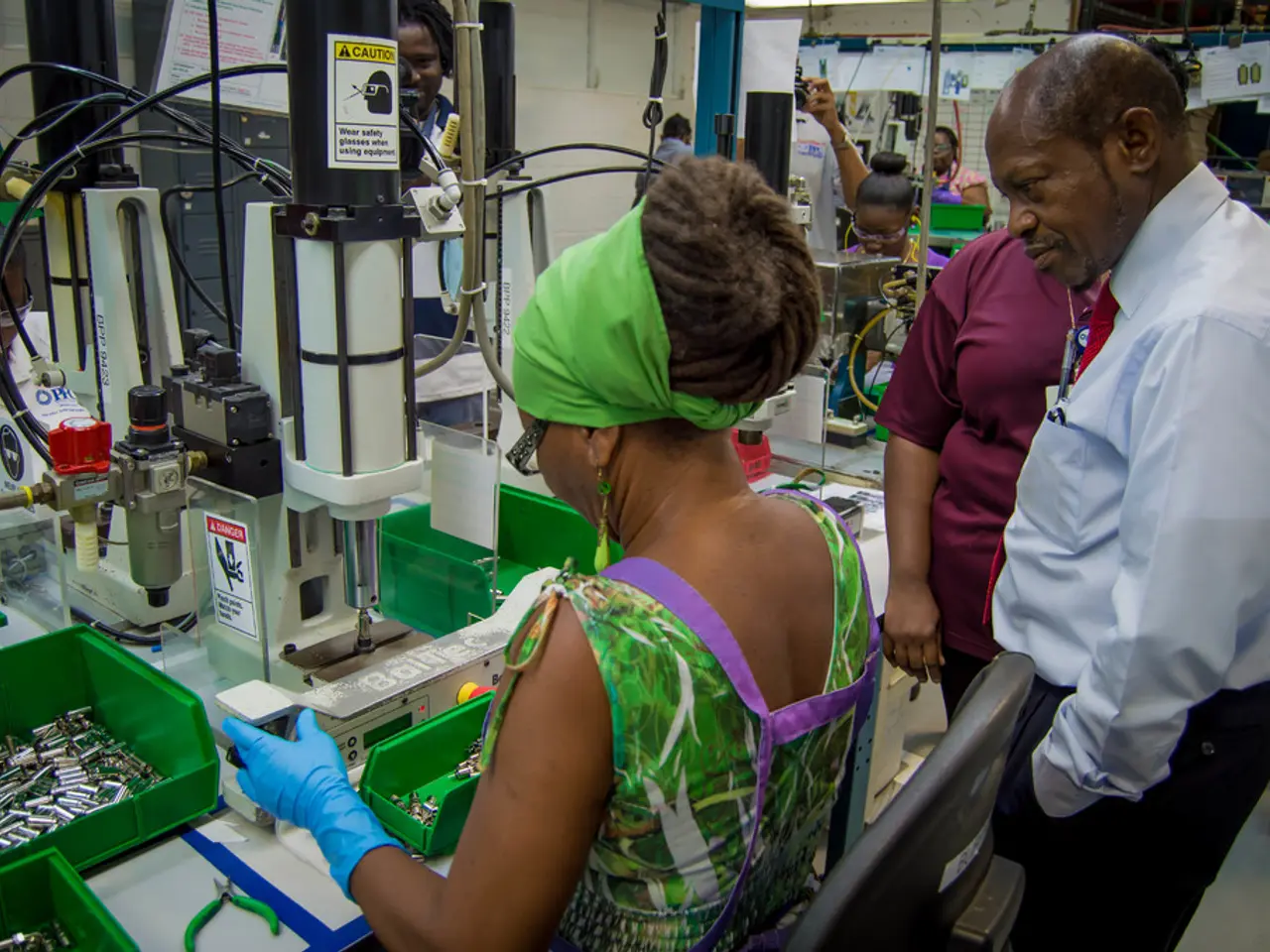Carmaking's Unexpected Advancement: The Role of Artificial "Fingers" in Manufacturing Processes
In a groundbreaking development, Toyota has unveiled an artificial finger designed to revolutionise safety assessments in manufacturing. The primary purpose of this biomimetic device is to simulate the touch and responses of a human finger, enabling safer and more precise safety testing on machinery and equipment without putting actual human workers at risk.
The creation of this highly sensitive and mechanically capable device was a collaborative effort between Toyota, Nagoya University, and Panasonic, starting in 2019. The artificial finger was developed to overcome the limitations of sensors in detecting dangers with automotive parts, which often have hard surfaces, sharp edges, and require intricate work.
To achieve its squishy elasticity, a particular animal skin was utilised in the development process. At its core, the artificial finger boasts a metal "bone," providing the necessary strength and flexibility for interacting with machinery.
The development of the artificial finger is part of Toyota's broader efforts to leverage advanced technologies to improve vehicle safety and production standards. It aligns with the company's investments in testing grounds and R&D facilities, as well as their focus on AI and automated testing facilities.
The artificial finger is being increasingly used at Toyota's plants in Japan, with Mori, a key figure in Toyota's Elemental Technology Development Dept., Production Engineering Div., leading the project to coordinate plant-wide robotics and automation. Among Toyota's employees in Japan, Mori is the only one making artificial fingers.
The dummy fingers are used to inspect the damage that would occur if a worker's hand was caught, demonstrating potential dangers on the factory floor. They allow for visual adjustment of mechanical forces to safe levels, aiding in the creation of a safer working environment for both humans and robots.
Despite the advancements in technology, concerns about safety risks to workers' hands persist as people and robots work closer together. The development of the artificial finger aims to reduce the time and effort involved in evaluating safety for robot implementation, thereby mitigating these risks.
Fortunately, no major accidents involving people working alongside robots have occurred at Toyota's facilities so far. However, the workforce in the manufacturing industry is expected to shrink due to falling birthrates and an aging population, underscoring the importance of such innovations in maintaining safety standards.
The artificial finger, initially developed by Panasonic to provide data for analysis, is a testament to the potential of collaboration and innovation in enhancing manufacturing safety. It is an exciting step forward in ensuring that Toyota's manufacturing operations prioritise worker safety and product reliability, ultimately leading to a safer and more efficient production environment.
- The collaboration between Toyota, Nagoya University, and Panasonic showed a significant move towards technology-driven inventions in the industry, with the development of the artificial finger being a prime example of this evolution, specifically in the realm of artificial intelligence, cybersecurity, and data-and-cloud-computing.
- Financing for research and development (R&D) in technology and AI has been instrumental in helping companies like Toyota create innovative solutions like the artificial finger, which will transform the manufacturing process and minimize safety risks for workers in the finance sector, while also improving the efficiency of the entire production system.
- The artificial finger represents a crucial integration of cutting-edge technology and mechanized solutions into the manufacturing industry, promoting safer work environments, more precise safety testing, and increased collaboration between humans and robots, all while ensuring the reliability and efficiency of the final products in the realm of cybersecurity.




